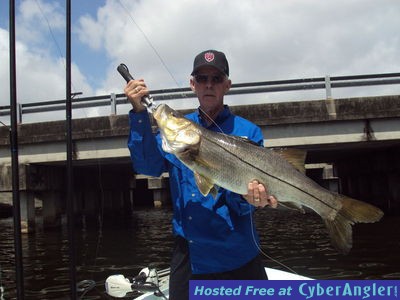Ft. Lauderdale is known to the fishing community as an offshore destination. While the offshore fishing in Ft. Lauderdale is really good, the Ft Lauderdale inshore fishing can be just as exciting.
Port Everglades is the main channel that leads you from the Atlantic into the Intracoastal Waterway and the canals that feed through all of Ft Lauderdale.
All those canals and waterways, certain times of the year, are loaded with tarpon and snook. Ft. Lauderdale holds some of the largest tarpon in South Florida, with fishing reaching close to 200lbs.
A lot of the bridges near Bahia Mar can hold some very large snook when the mullet run happens each spring and fall.
I also like to fish Ft. Lauderdale at night. The canals just off the Intracoastal Waterway have docks with underwater lights.
Those lights will attract bait-fish and the predators will be lurking just outside the shadow lines of those dock lights. That is great scenario for fly fisherman and light tackle anglers.
Alot of times I will troll right down the Intracoastal waterway with live bait. During the mullet run, the schools of mullet will come down the beach and into the Port Everglades. They will hide in big schools in the back of canals and coves out of the way of predators. By trolling with these baits, you get to cover more water and alot of times put your bait right in front of giant tarpon.
Another way I will fish these waters is set up tide from some structure, like a bridge, piling, or at night a dock. I will then naturally drift back a bait with the tide to where the fish maybe holding. I like to do this at night. At night the lights on the bridges will create a shadow line on the water. The tarpon and snook will line up on these shadow lines and wait for the tide to bring bait to them. The good thing is that Ft. Lauderdale and Miami have plenty of bridges for this to happen. Usually the bridges closes to the inlet will hold the biggest fish. Those bridges will have the strongest current, so more bait will get flushed through those areas.
If you we are targeting tarpon and snook, I will usually set up my trip around the tides and time of day. During the middle of the day, even if we have a good tide, the fishing is relatively slow. Tarpon and snook are nocturnal feeders, so having a low light condition is best. Fishing at night is best but sometimes that is not always possibly. Having low light conditions will put you in the best chance of catching a big fish. Early morning and late evenings are best when targeting tarpon and snook. Alot of anglers visit Ft. Lauderdale and Miami on business and can not fish during the day. Fishing for these guys makes it perfect for that situation!
By staying inshore, you definitely don’t have to worry about getting sea sick if the weather turns for the worse. Nothing is worse than being out all day on bumpy seas and feeling terrible.
A lot of times I get asked, “What is Inshore Fishing?” Inshore fishing is fishing over shallow waters close to shore. For example, bays, estuaries, and locally, Ft. Lauderdale and Miami has canals that hold some giant snook and tarpon certain times of the year. Since you stay right in the intracoastal, that would be considered “inshore.” Inshore fishing is one of the most exciting ways to catch fish because it’s done in shallow water and usually with light tackle or fly tackle.
One of the major benefits of fishing inshore is not getting sea sick. Most days in South Florida, there is a pretty good breeze. If you decide to fish offshore, there is no place to hide from the wind. When that wind kicks up, it obviously kicks up the waves in the ocean. If you are anything like me, after a few hours of going up and down on each wave, you will be leaning over the gunnels showing everyone what you had for breakfast. You seem to forget why you booked an offshore trip in the first place. You can’t wait until you get back to the dock so everything will stop moving! That is probably one of the main reasons I prefer to stay inshore. Fishing inshore waters of Miami and Ft.Lauderdale gives you the opportunity no matter the wind, to stay in relatively calm waters. Fishing inside the intracoastal on windy days is the beauty of taking that inshore fishing trip!
Staying inshore and fishing downtown Ft. Lauderdale, that is something you don’t have to worry about.
So next time you’re visiting Ft Lauderdale, don’t forget about the great inshore fishery it has to offer.

